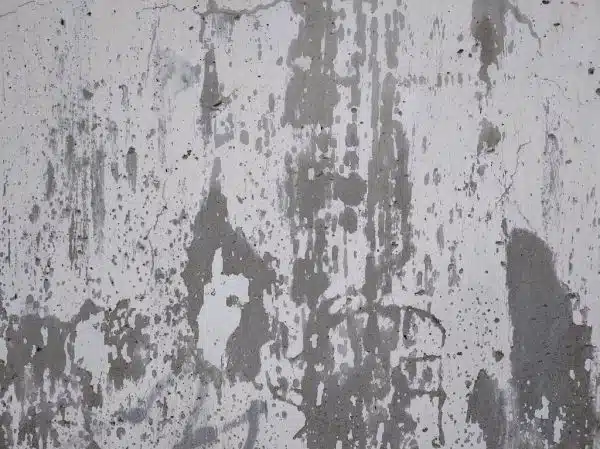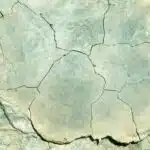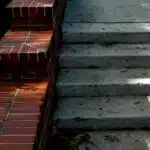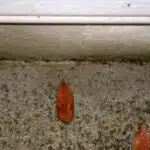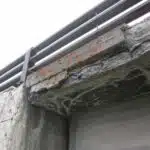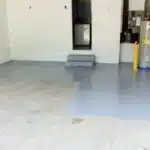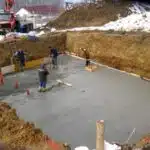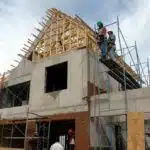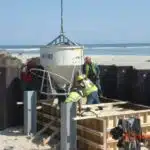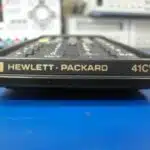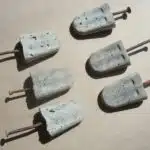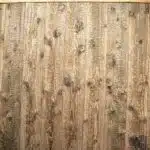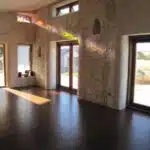As a concrete wall repair specialist, I have come across countless cases of damaged walls. Cracks in concrete walls are some of the most common types of damage that property owners face. Cracks can occur due to several reasons such as settling soil, moisture penetration, or structural issues. However, no matter what the cause may be, it is essential to address these cracks immediately. Not only do they look unsightly and compromise the aesthetics of a building, but they also pose a severe risk to its structural integrity.
In this article, we will discuss the steps involved in repairing cracks in a concrete wall. While it may seem like a daunting task at first glance, with the right tools and techniques, repairing cracks is relatively straightforward. With our guidance and expertise, you can learn how to fix cracks in your concrete walls efficiently and effectively. By following these guidelines closely and taking action promptly, you can ensure that your building remains safe and secure for years to come.
Identifying The Type And Severity Of The Crack
As a concrete wall repair specialist, one of the critical steps in repairing cracks is identifying the type and severity of the damage. It may seem obvious, but assessing the severity of the crack is essential before proceeding with any repairs. This step will determine how to approach fixing the crack, from simple DIY techniques to more complex professional repairs.
Cracks in concrete walls can be caused by various factors such as weather changes, soil movement, or structural issues. Therefore, it is crucial to understand common causes before determining the best course of action for repairing them. A small hairline crack may only require filling with a simple sealant, while larger cracks may require more extensive repairs like injection grouting or replacing sections of the wall entirely.
Once you have assessed the severity and identified the cause of the crack, you can move on to gathering the necessary tools and materials required for repairing it. But before doing so, it’s important to evaluate whether you have the skills and expertise required to fix it yourself or if you need to seek professional help.
Gathering The Necessary Tools And Materials
To effectively repair cracks in a concrete wall, it is important to gather the necessary tools and materials. Choosing high quality materials is key to ensuring a long-lasting repair. Low-quality products may be cheaper initially, but they are not as durable and will likely need to be replaced sooner. It is recommended to use epoxy injection systems for structural repairs, as they are effective in filling and bonding cracks.
Essential safety precautions must also be taken when repairing concrete walls. Protective gear such as gloves, safety glasses, and dust masks should always be worn to prevent injury or inhalation of hazardous particles. A sturdy ladder should be used when working on higher areas of the wall, and caution should be taken when using power tools such as grinders or drills.
Once all necessary tools and materials have been gathered and safety precautions have been taken, the next step is preparing the surface for repair. This involves cleaning the crack thoroughly with a wire brush or similar tool to remove any loose debris or old filler material. The crack should then be flushed with water to ensure that it is clean and free of dust before applying any filler material. With these steps completed, you are now ready to begin repairing the crack in your concrete wall.
Preparing The Surface For Repair
Prepping techniques are essential for repairing cracks in a concrete wall. The first step involves cleaning the surface thoroughly to remove any debris, dirt, and loose particles. A clean surface ensures that the repair material will bond effectively with the existing concrete.
Surface cleaning should be done using a wire brush or a scraper to remove any flaking or peeling paint, rust stains, or old sealers. Any visible cracks should also be widened slightly using a chisel or a hammer to create space for the repair material to penetrate deeper into the crack. Afterward, vacuum and sweep the area to ensure all debris is removed.
To prepare an ideal surface for repair, one can use either of these prepping techniques:
- Pressure washing: This method uses high-pressure water to remove any stubborn stains and dirt from the surface.
- Acid etching: It involves applying an acidic solution on the surface to remove any contaminants and open up pores in preparation for better adhesion.
- Shot blasting: Here, small steel pellets are blasted onto the surface at high speeds to remove contaminants and roughen up the surface for better bonding.
- Diamond grinding: This technique involves using diamond blades to grind down and smooth out irregularities on the concrete’s surface.
With these prepping techniques in place, one can now proceed with repairing hairline cracks in their concrete wall without worrying about poor adhesion due to poor preparation of the surface.
Filling Hairline Cracks
- Materials needed to fill hairline cracks in a concrete wall include a concrete patching compound, a putty knife, and a trowel.
- Preparation for filling hairline cracks should include cleaning the concrete wall, removing any existing crack filler, and ensuring that the crack is free of dirt and debris.
- Filling hairline cracks should begin by applying the patching compound to the crack with the putty knife, filling the crack to be slightly higher than the surface of the wall.
- The patching compound should then be troweled to a smooth finish, ensuring that the crack is completely filled.
- Any excess patching compound should be removed and the surface should then be allowed to dry completely.
- Once dry, the wall should be sanded to ensure that the patch is level with the surrounding surface.
Materials
Choosing appropriate and cost-effective materials for concrete wall crack repair is crucial to ensure the longevity of the repair work. Epoxy injection is a popular choice for filling hairline cracks in concrete walls as it is effective, durable, and long-lasting. However, its application requires careful consideration of the environmental impact as well as proper equipment and expertise.
Another option for filling hairline cracks in concrete walls is using polyurethane foam. This material expands after application, effectively sealing the crack. It is also resistant to moisture and can withstand extreme temperatures. While it may be more expensive compared to epoxy injection, polyurethane foam has less environmental impact and provides better insulation.
Understanding the environmental impact of different materials for concrete wall crack repair is essential in making an informed decision on which material to use. Choosing eco-friendly alternatives such as low VOC (volatile organic compounds) sealants or using recycled materials can reduce your carbon footprint while providing effective repairs that will last longer. By selecting the best materials for each project, you can ensure that your repair work not only provides a seamless finish but also contributes to a more sustainable future.
Preparation
When it comes to filling hairline cracks in concrete walls, preparation is just as crucial as selecting the appropriate materials. Proper preparation ensures that the repair work will not only be effective but also long-lasting. Before starting any repair work, it is essential to have the necessary tools and equipment on hand, such as a wire brush, chisel, hammer, and vacuum cleaner.
Safety should always be a top priority when preparing for concrete wall crack repair. The tools used for this type of work can be dangerous if not handled properly. Safety precautions such as wearing protective gear like gloves and safety glasses must be taken to avoid injury. Additionally, proper ventilation should be established when working with materials that emit harmful fumes.
Once the necessary tools are available and safety precautions have been taken care of, it’s time to prepare the crack for filling. This involves cleaning out any debris or loose material from the crack using a wire brush or chisel and then vacuuming up any remaining dust or particles. By following these steps for preparation before filling hairline cracks in concrete walls, you can ensure that your repair work is safe and effective.
Filling
To effectively repair hairline cracks in concrete walls, filling the crack is crucial. One of the most popular methods used for filling these types of cracks is using epoxy or caulking. These materials are specifically designed to fill and seal hairline cracks, preventing further damage and water penetration.
Before starting the filling process, it’s important to ensure that the crack is clean and free of debris. After cleaning out the crack with a wire brush or chisel, it’s recommended to vacuum up any remaining dust or particles to achieve a clean surface. Once the crack is cleaned and prepared, applying epoxy or caulking can be done with a caulk gun or putty knife.
When filling hairline cracks in concrete walls with epoxy or caulking, it’s essential to follow manufacturer instructions carefully. For instance, some epoxies require mixing before application while others are applied directly from their packaging. Proper application techniques such as smoothing out excess material can also help ensure that your repair work is long-lasting and effective.
By following best practices when filling hairline cracks in concrete walls with epoxy or caulking, you can repair damaged walls and prevent further damage from occurring. Remember to always prioritize safety when working with these materials and consult with a professional if you’re unsure about how to proceed.
Patching Small And Medium-Sized Cracks
To patch small and medium-sized cracks in a concrete wall, the first step is to assess the extent of the damage. This will help you determine the right approach to use in repairing the cracks. In most cases, small and medium-sized cracks can be repaired using epoxy or polyurethane injection methods.
Epoxy injection involves injecting an epoxy resin into the crack to seal it permanently. This method is ideal for small cracks that are not wider than 0.05 inches. Polyurethane injection, on the other hand, is used for larger cracks with a width of up to 0.5 inches. The process involves injecting a liquid polyurethane material into the crack which then expands and fills up all spaces within the crack.
After completing the repair process, it’s important to color match the repaired area with the rest of the wall. This ensures that there are no visible signs of repair work done on your concrete wall. Additionally, cost estimation is crucial in determining whether or not you’ll hire professional services or do it yourself.
Moving onto repairing large cracks…
Repairing Large Cracks
Like a surgeon repairing a complex wound, it takes patience and skill to fix large cracks in concrete walls. Fortunately, using epoxy filler can get the job done right. After all, covering up large cracks is not just about aesthetics; it also ensures that the wall’s structural integrity remains stable.
To begin with, you must thoroughly clean the area surrounding the crack. This will allow the epoxy filler to adhere properly. Then, mix the two parts of epoxy filler according to its instructions. Apply the mixture into the crack using a putty knife or trowel, making sure to fill it completely. Allow it to dry for several hours before sanding any excess surface material.
Finally, when fixing vertical and horizontal cracks, there are different approaches to take. For vertical cracks, use an injection kit that forces epoxy into the crack’s depth. It will then seep through and fill in any gaps left behind. Horizontal cracks require more attention as they can indicate serious problems such as foundation settling or water damage. In these cases, consult with a professional contractor who can assess and fix any underlying issues before applying epoxy filler.
By following these steps carefully and precisely, you can repair large cracks in concrete walls with ease and confidence. Remember that prevention is key; regular inspections of your walls can help catch small problems before they escalate into something larger and more costly to fix.
Fixing Vertical And Horizontal Cracks
Vertical and horizontal cracks in a concrete wall can be alarming to homeowners or building owners. These cracks may indicate structural problems and require immediate attention, especially if they are more than 1/8 inch wide. If the crack is smaller than that, it can still allow moisture to enter the wall and cause further damage over time. Fixing vertical and horizontal cracks requires careful attention to detail, as incorrect repairs can lead to more significant problems down the line.
One effective method for fixing vertical and horizontal cracks is using epoxy injections. The epoxy fills the crack entirely, creating a solid bond between the two sides of the wall. This type of repair is often preferred for larger cracks because it provides a long-lasting solution that does not require frequent maintenance. Epoxy injections also have excellent adhesive properties, making them ideal for repairing foundation walls.
Another option for fixing vertical and horizontal cracks is applying sealant for longevity. Sealant helps prevent moisture from entering the crack, which can lead to further damage when temperatures fluctuate. A high-quality sealant will also provide additional support to keep the crack from expanding over time. Applying sealant can be an effective temporary fix if you’re waiting for professional help or if you’re dealing with small cracks that do not pose an immediate threat.
In summary, fixing vertical and horizontal cracks in a concrete wall requires careful consideration of several factors, including size, location, and potential structural issues. Using epoxy injections or applying sealant are two methods that can help address these issues effectively. It’s essential to work with professionals who have experience in repairing concrete walls to ensure that your repair job is done correctly and safely without causing any further harm to your property.
To address structural issues underlying cracking, it’s necessary first to identify what’s causing it before attempting any repairs fully. Structural issues such as soil settlement or foundation shifting need expert attention since they require specialized equipment such as hydraulic jacks and piers to lift or stabilize the foundation. In the next section, we’ll take a closer look at how to identify and address these underlying structural issues that may be causing cracks in your concrete walls.
Addressing Structural Issues
When it comes to repairing cracks in a concrete wall, it is important to address any underlying structural issues before proceeding with the repairs. Common causes of cracks in concrete walls include excessive vibration or movement, overloading, and settling of the foundation. These issues can compromise the stability of the structure and lead to further damage over time if left unaddressed. It is crucial to identify and resolve these underlying problems before attempting any repairs.
Prevention tips for avoiding structural issues in concrete walls include regular inspection and maintenance, proper installation techniques, and appropriate design considerations. Regular inspections can help identify potential problems before they become major issues, while proper installation techniques and design considerations can ensure that the structure is built to withstand expected loads and environmental factors. Additionally, incorporating reinforcement materials such as rebar or wire mesh can strengthen the integrity of the wall and prevent cracking.
In conclusion, addressing underlying structural issues is critical when repairing cracks in a concrete wall. Common causes of such cracks include excessive vibration or movement, overloading, and settling of the foundation. To prevent these issues from occurring in the first place, regular inspection and maintenance, proper installation techniques, appropriate design considerations, and reinforcement materials should be incorporated into construction plans. In the next section, we will discuss dealing with moisture penetration as another important aspect of maintaining a structurally sound concrete wall.
Dealing With Moisture Penetration
Addressing Structural Issues in a concrete wall is crucial before moving on to the next step of repairing cracks. Once you have resolved structural issues, it is time to repair the cracks in your concrete wall. Cracks can occur due to various reasons such as freeze-thaw cycles, settlement, or shrinkage.
To repair cracks in a concrete wall, start by cleaning the surface thoroughly with a wire brush and then applying a concrete bonding agent. After that, fill the cracks with epoxy or polyurethane-based filler depending on the size of the crack. Once filled, smooth out any excess material and let it dry completely before painting or sealing it.
Dealing with Moisture Penetration is an important aspect of preventing future cracks in your concrete wall. Waterproofing solutions such as sealants or coatings can be applied to prevent moisture from entering your walls. You can also consider installing drainage systems around your home’s foundation to redirect water away from your concrete walls. Additionally, mold prevention techniques should be employed as mold thrives in moist environments and can weaken your concrete walls over time.
Preventing future cracks in your concrete wall requires proper maintenance and care. Inspect your walls regularly for signs of damage and address them promptly to avoid bigger problems later on. Ensure proper drainage around your home’s foundation and consider investing in a dehumidifier for areas with high humidity levels within your home. By taking preventative measures, you will not only save money on costly repairs but also ensure the longevity of your concrete walls.
Preventing Future Cracks
Preventive measures are essential in ensuring the longevity of a concrete wall. While repairing cracks is necessary, it is equally important to take steps to prevent future cracks from forming. It is advisable to hire a professional contractor who will assess your wall and identify any underlying issues that have led to the cracks.
One of the most effective long term solutions for preventing future cracks is installing expansion joints. These are gaps between sections of the wall that allow for movement as a result of temperature changes or shifting soil. Expansion joints can be filled with flexible materials such as rubber or foam, which help absorb stress and prevent cracking.
Another preventive measure is regular maintenance. This involves inspecting your wall periodically for signs of damage and promptly addressing any issues that arise. Additionally, you should avoid placing heavy objects against the wall and ensure proper drainage around the wall to prevent water damage. By taking these preventive measures, you can significantly reduce the likelihood of future cracks in your concrete wall.
As important as preventive measures are, sometimes they may not be enough. In some cases, applying a sealer or paint may be necessary to protect the wall from moisture penetration and damage caused by environmental factors such as harsh weather conditions. The next section will provide guidance on how to apply a sealer or paint effectively.
Applying A Sealer Or Paint
As a concrete wall repair specialist, it is essential to consider the final step of applying a sealer or paint. After repairing the cracks in your concrete wall, choosing the right product and color for your sealer or paint will help to protect the surface from future damage and enhance its appearance.
When selecting a sealer, there are two main types: penetrating and topical. Penetrating sealers soak into the concrete pores and provide protection against moisture and stains. Topical sealers create a layer on top of the surface to protect against scratches, UV rays, and weathering. The type of sealer you choose will depend on your specific needs.
Similarly, when selecting a paint for your concrete wall, it’s important to consider factors such as color, gloss level, and durability. Choosing a color that complements the surrounding landscape or building can enhance its aesthetic appeal. Additionally, high-gloss paints offer more shine but may require more maintenance than low-gloss options. Ultimately, selecting the right product for your needs can make all the difference in protecting your repaired concrete wall.
With careful consideration of product type and color selection, applying a sealer or paint to your repaired concrete wall can be an effective way to prolong its life while enhancing its appearance. However, it’s essential to ensure that any products used are tested for effectiveness before application to ensure they meet their intended purpose.
Testing For Effectiveness
Comparing techniques is crucial in determining the most effective way to repair cracks in a concrete wall. There are various methods to fix the damage, such as using epoxy injection or cement grouting. Each technique has its advantages and disadvantages, so it’s important to weigh them before deciding on which one will work best for your specific situation.
Measuring success is also essential in evaluating the effectiveness of the repair process. One way to do this is by checking if the cracks have disappeared or if they’ve stopped growing. Another is to test the strength of the repaired area through destructive and non-destructive methods. By doing so, you’ll be able to determine if the repair has been successful or if further action needs to be taken.
Additionally, it’s important to take note that some factors can affect the effectiveness of concrete wall crack repairs over time. These include changes in temperature, moisture content, and soil movement. Regular inspections and maintenance are necessary to ensure that your concrete wall remains sturdy and free from any future damage.
Moving forward with maintaining your concrete wall, regular cleaning and inspection are critical in preventing cracks from forming or worsening. It’s also important to address any concerns immediately before they worsen and require more extensive repairs. By taking these steps, you can ensure that your concrete wall remains strong and secure for years to come.
Maintaining Your Concrete Wall
Testing for effectiveness is an essential step in repairing cracks in a concrete wall. However, preventing damage to your concrete wall is equally crucial. Regular maintenance of your concrete wall can help avoid the need for repairs and save you money in the long run. Here are some tips on how to maintain your concrete wall:
First, keep the area surrounding your concrete wall clean and free from debris. Dirt, leaves, and other materials can trap moisture against the wall, which can lead to cracks over time. Additionally, make sure that any trees or shrubs near the wall are trimmed regularly to prevent their roots from damaging the foundation.
Second, inspect your concrete wall regularly for signs of damage such as cracks or discoloration. If you spot any issues, address them immediately before they worsen and require costly repairs. It’s also a good idea to wash your concrete walls with water and a mild detergent solution every six months to remove any built-up dirt or stains.
Lastly, seeking professional help is recommended if you’re unsure about how to maintain your concrete wall properly or if you suspect significant damage has occurred. A professional can assess the situation and recommend appropriate repairs or preventative measures that will ensure your concrete wall continues to function correctly for years to come. Remember that regular maintenance of your concrete walls can go a long way in preventing damage and ensuring their longevity.
| Column 1 | Column 2 | Column 3 | Column 4 | Column 5 |
|---|---|---|---|---|
| Save Money | Prevent Damage | Longevity | Peace of Mind | Safe Environment |
| Avoid Costly Repairs | Regular Maintenance | Professional Help | Inspection | Cleanliness |
| Secure Investment | Proactive Approach | Expert Advice | Quality Workmanship | Trusted Provider |
The above table highlights the benefits of proper maintenance of your concrete walls. By taking a proactive approach in safeguarding your investment, you can enjoy peace of mind knowing that your property is safe and secure. Regular inspections, cleaning, and seeking professional help when needed are essential in preventing damage and maintaining the longevity of your concrete walls. With quality workmanship and expert advice from a trusted provider, you can achieve a safe environment for yourself and those around you.
Seeking Professional Help
Are you unsure of your ability to repair the cracks in your concrete wall? Do you lack the expertise and experience needed for such a job? Seeking professional help is essential in ensuring that the repairs are done correctly and effectively.
The importance of expertise cannot be overstated when it comes to repairing concrete walls. Professionals have extensive knowledge on the types of materials to use, the correct methods for repairing different types of cracks, and how to ensure that the repairs last for a long time. Attempting to repair cracks without this level of knowledge can result in further damage to your wall or even compromise its structural integrity.
While it may seem tempting to save money by attempting the repairs yourself, it is important to weigh the cost of professional help against that of making mistakes during DIY attempts. Mistakes can result in more significant issues down the line, which will require more costly repairs. Hiring a professional may seem expensive at first glance, but it ultimately saves you money in the long run.
Seeking professional help for repairing cracks in your concrete wall is crucial if you lack expertise in this field. The cost may seem high initially, but it outweighs the risk and potential cost associated with making mistakes during DIY attempts. However, should any problems arise after hiring a specialist; troubleshooting common issues can help identify any potential errors in the process.
Troubleshooting Common Issues
Concrete walls are a popular choice for many building projects due to their strength and durability. However, even the most well-constructed concrete walls can develop cracks over time. It is important to address these cracks as soon as possible to prevent further damage and ensure the structural integrity of the wall.
Causes of concrete wall cracks can vary widely, but some common reasons include settlement, freeze-thaw cycles, and exposure to extreme weather conditions. Prevention methods include ensuring proper drainage around the foundation of the wall and using high-quality materials during construction. Regular maintenance is also crucial in preventing cracks from developing or worsening.
When it comes to repairing cracks in a concrete wall, there are several tips and tricks that can make the process easier and more effective. One important step is to thoroughly clean the area around the crack before beginning any repairs. This will ensure that the repair material adheres properly and provides a strong bond with the existing concrete. It is also important to choose a repair material that is appropriate for the size and severity of the crack. For larger cracks, professional assistance may be necessary.
In summary, addressing cracks in a concrete wall requires understanding their causes and taking steps to prevent them from occurring in the first place. When repairs are needed, following proper cleaning techniques and selecting appropriate repair materials are key factors in achieving a successful outcome. With these tips and tricks in mind, homeowners can effectively maintain their concrete walls for years to come.
Conclusion
Concrete walls are susceptible to cracks due to various factors such as weather conditions, structural problems, and age. Identifying the type and severity of a crack is crucial in determining the appropriate repair method. Once identified, gathering the necessary tools and materials is vital before beginning any repair work.
Preparing the surface for repair involves cleaning out debris and loose concrete from the crack. Hairline cracks can be filled with epoxy or polyurethane sealant. Small to medium-sized cracks require patching using a concrete patching compound mixed according to manufacturer instructions. Testing the effectiveness of the repair is essential after completing the process to ensure satisfactory results.
Maintaining your concrete wall is integral to prolonging its lifespan. Regular inspection and maintenance can prevent further damage and costly repairs. Seeking professional help for complex or severe cracks is advisable, as it requires specialized knowledge and equipment.
According to recent studies, 80% of concrete wall failures occur due to poor maintenance, while only 20% are caused by design flaws or construction errors. This statistic highlights the importance of regular upkeep of concrete walls, as failure to do so can result in catastrophic consequences such as property damage or even loss of life.
As a specialist in concrete wall repair, it is my duty to emphasize the significance of proper maintenance in ensuring long-lasting and secure structures. By following these guidelines, you can effectively repair cracks in your concrete wall and maintain its integrity for years to come. Remember that prevention is always better than cure when it comes to concrete wall maintenance.
Image Credits
- “Cracked Concrete Wall 01 – by TexturePalace.com” by texturepalace (featured)

